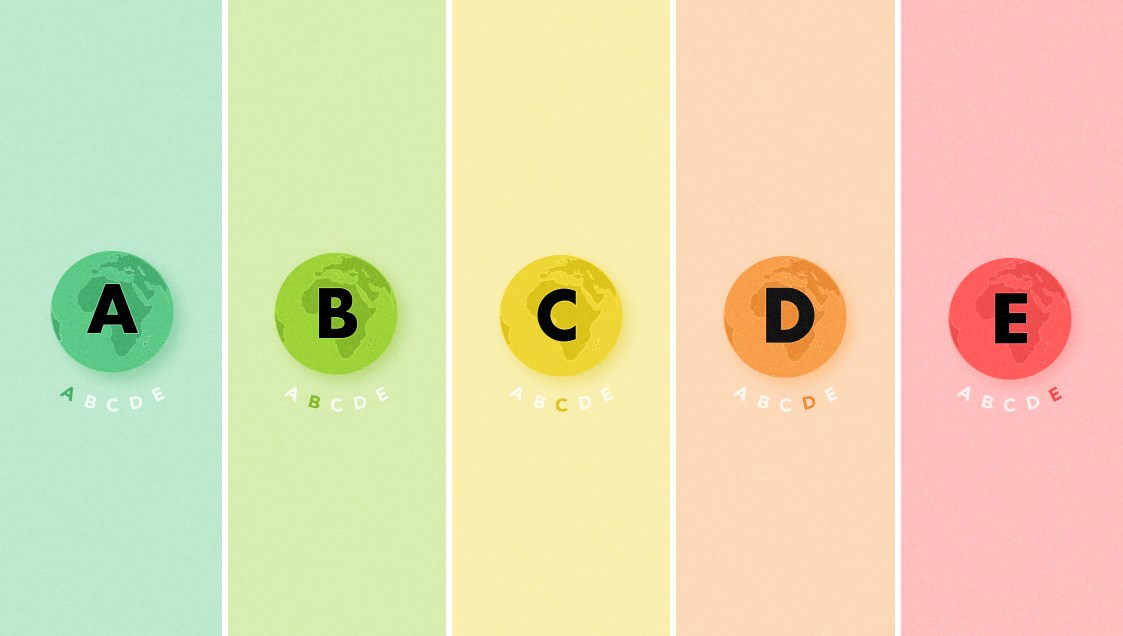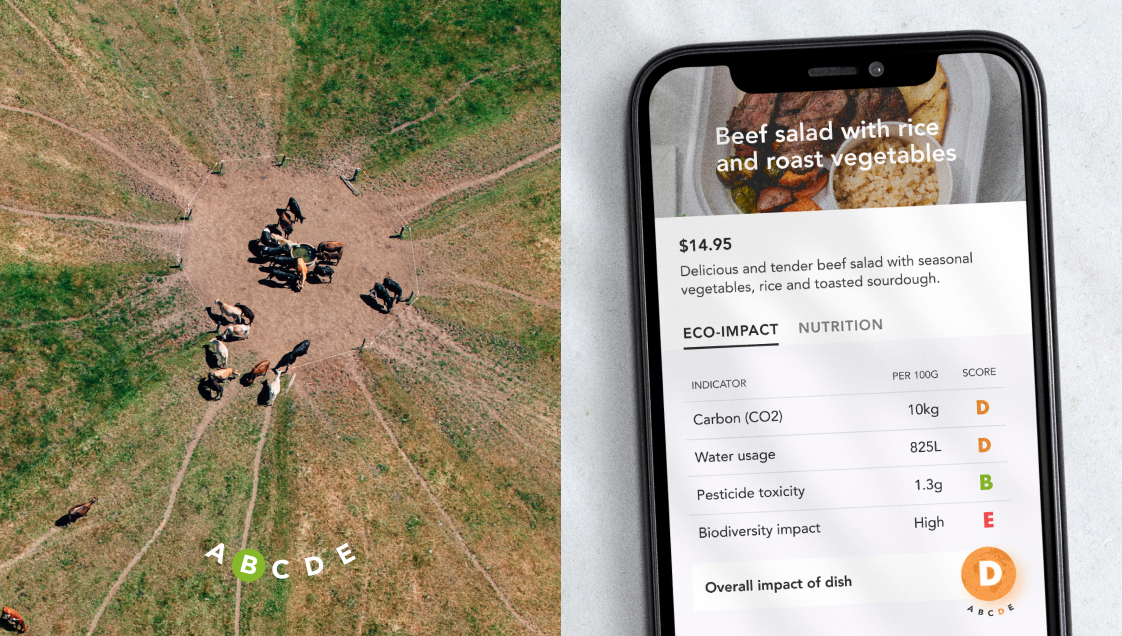
AKQA: Environmental Impact Labelling

AKQA: Environmental Impact Labelling
Changing the way we eat
Although food production is responsible for a third of all human-induced greenhouse gas emissions, we tend to underestimate the impact of this at the checkout.
Labelling for nutritional content is standard across most grocery products but making an informed choice about which products have a less negative effect on the environment is more challenging.
Oxford University worked with one of the world’s largest food-service companies on a pilot to trial an environmental impact framework. This includes a scoring system designed for food products to clearly communicate their ecological footprint.
Designed by AKQA, the impact labelling design system can be applied across a range of consumer-facing food products and services; on physical in-store packaging, food delivery apps and even restaurant menus.

The impact score gives a comprehensive history of the foods we choose, going beyond greenhouse gas emissions to also include insight into a product’s effect on biodiversity, its water usage and any pesticides used. The idea is to give a holistic snapshot of a product’s impact across its life cycle.
Oxford University senior researcher in human behaviour, Brian Cook says most labels only tell one side of the story. “Carbon is just one part of the issue and well-meaning consumers who buy low-carbon labelled food might unwittingly find they’ve bought a product that instead impacts biodiversity loss or pollutes local water streams.”
After an initial online study, the impact labelling framework and design system was trialled in more than a dozen cafeterias across the UK.
From here, the hope is to scale up the solution, bringing it to supermarkets and other food outlets to give customers more transparency on the environmental impact of their food choices and give the planet a better shot at a net-positive future.

